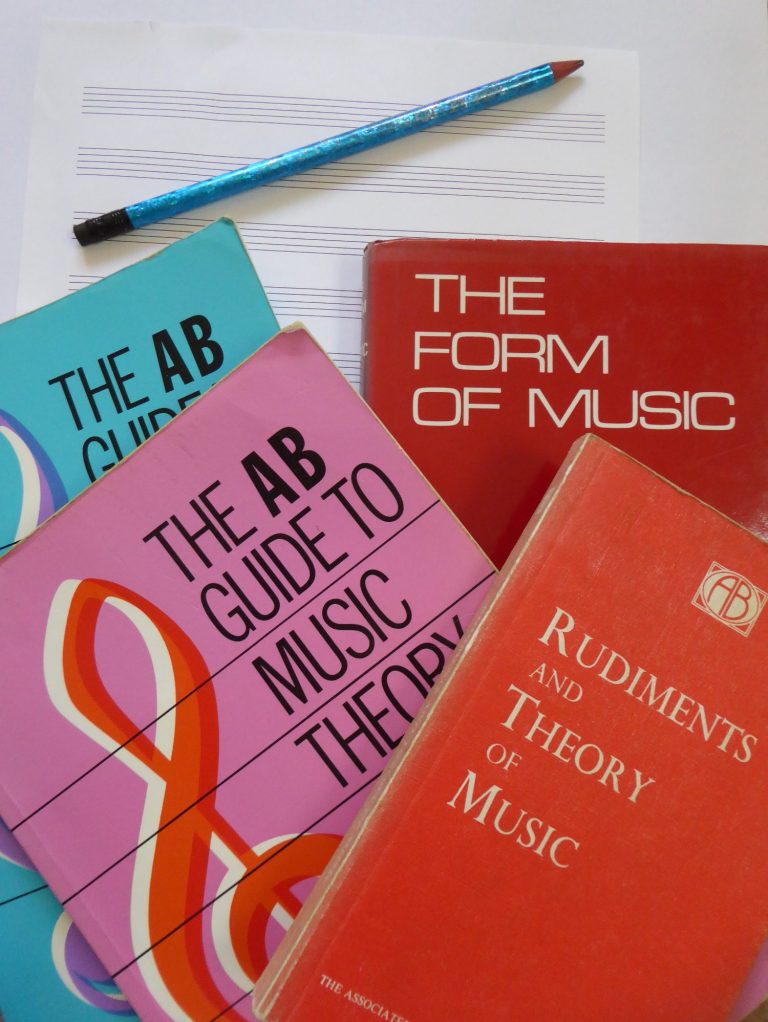
Background
In the 21st century we are saturated by music. We have access to a myriad of musical genres and combinations of group of musicians from around the world. Up to around a hundred years ago singing would have been heard regularly, perhaps at church or in family gatherings, but not a lot of other instruments would have been experienced by most 'average' people. Today you can listen to music by radio (online, digital, FM, MW, LW, SW), MP3s, CDs, streaming, cassettes and records, as well as watching music being played on DVDs, videos, MP4s, YouTube and BBC 2 etc! Sheet music is widely available too, so that you can easily play what somebody else has composed. Someone had to work out how to accurately portray the sounds that we hear into symbols that we can play. A new language had to be conceived. This process started hundreds of years ago and still continues. By studying for the Grade 5 Theory exam you will learn a great deal about Western music notation and hopefully this will inspire you to both play more challenging music and to compose some of your own ideas to share with others.
Grade 5 Theory
Many people studying to play an instrument will eventually get around to having to take the Grade 5 Theory exam. A fair few years ago, the Associated Board used to publish their exam data on their website. Unfortunately, they don't do that anymore as they think it is "commercially sensitive information." Approximately ten years ago around 22,000 people in the UK and Ireland sat this particular Associated Board exam every year. Only 16% of candidates got a distinction (90%+), yet unbelievably around 14% failed (below 66%) the exam! The Merit category (80-89%) was introduced in 2002. A new mark scheme was introduced when theory exams were completed online. The maximum mark is now 75, with 50 needed to pass, 60-64 to gain a merit and 65+ to earn a distinction.
You can read the current syllabus for the exam here - remember you will need to demonstrate an understanding of all the topics from the preceding Grades and not just Grade 5. You are allowed up to two hours to complete all the Questions on the 'paper.' It is a really good idea to complete several specimen papers in the run up to the day and these are available from your local music shop or online. The Associated Board has also released an app to help in exam preparation. Exams used to be held in public centres three times a year, but now they can be taken online on any day under certain conditions.
I would encourage you to not purely study music theory in order to pass the hurdle of an exam, which you will need as a possible prerequisite to undertake a Grade 6 and above practical examination. Let theory be part of the normal learning of your instrument at whatever level you are at. Ask yourself questions about a piece you are learning to play or sing. Think about key, repeated patterns, form and rhythmic ideas. Does the title give you any indications about how you should play it? What do you know about the composer? Syllabuses will change every few decades (the theory syllabus I sat for exams in the 1970s and 1980s was first published in the 1950s) but don't restrict yourself to what a particular syllabus tells you to learn. Think widely and explore broadly. Ask a teacher for help with this, if you have one. Remember, an exam is only a small part in the process of gaining an excellent and thorough musical education. Indeed, some people don't do well at exams but can be exceptional in what they say and play away from the sterile environment of an exam room!
Whether you are teaching yourself or are getting help from a local teacher, I hope the following printable pdf documents will help you to understand what the syllabus demands and more importantly, that you use the information to become a better musician. Please feel free to print them out to help you study and revise. Only the links in blue currently work, with the ones in green being in preparation.
A Mind Map that covers the whole 1990 syllabus.
Performance Directions (taken from the AB's Music Theory in Practice Books):
Grades 1 2 3 4 (Italian, French and Instruments) 5 (Italian and German)
Pitch:
Naming notes on four different clefs Intervals Transposition
Scales:
Key Signatures:
How to work them out What they look like on different staves
Harmony:
Chords
Rhythm:
Notes and Rests Time Signatures
Instruments of the Orchestra:
Families, ranges, sound production
Chords
A variety of pdf files are here to help with your experimenting as you play and compose:
Root Positon, 1st Inversion and 2nd Inversion triads on staves in all 24 keys.
Root Position, 1st Inversion and 2nd Inversion triads on a piano (photos) in all 24 keys.
The three Primary Triads (in Root Position) on staves in all 24 keys.
The three Primary Triads on a piano (photos) in all 24 keys.
II-V-Is in all 24 keys for the Jazz genre.
128 Wentworth Drive, Nuneaton, Warwickshire, CV11 6NX
07982 404 951 nuneatonmusiclessons@gmail.com
© 2006-2024 Nuneaton Music Lessons. All rights reserved.
We need your consent to load the translations
We use a third-party service to translate the website content that may collect data about your activity. Please review the details in the privacy policy and accept the service to view the translations.